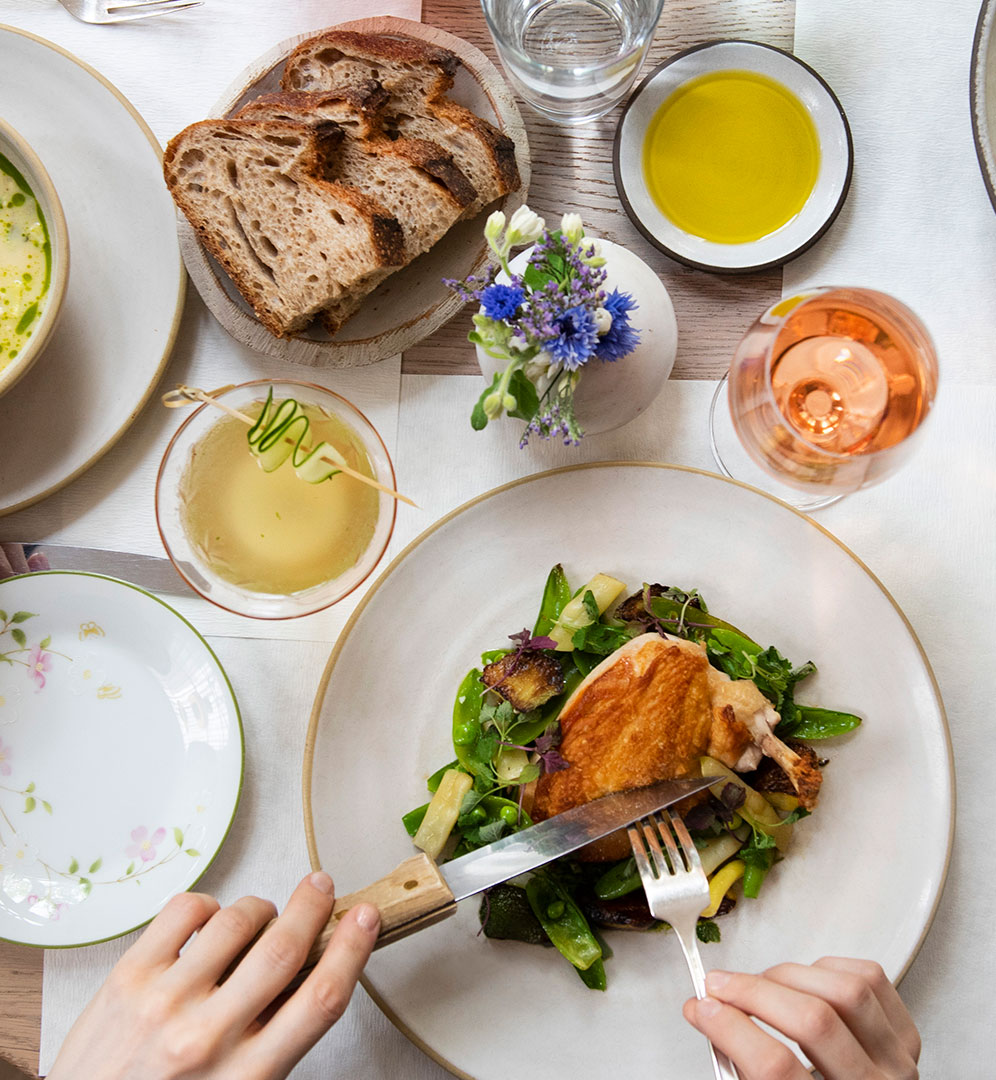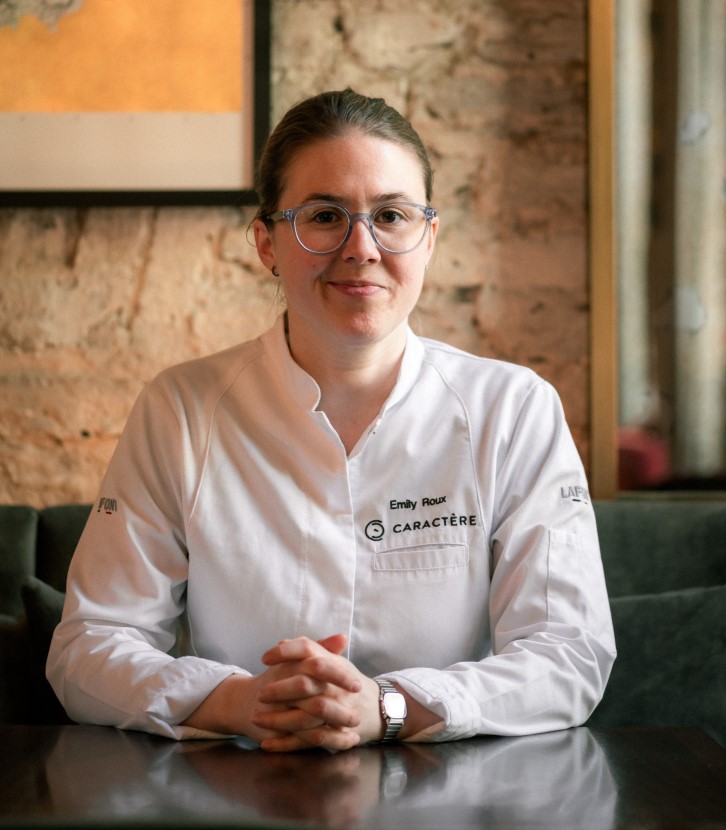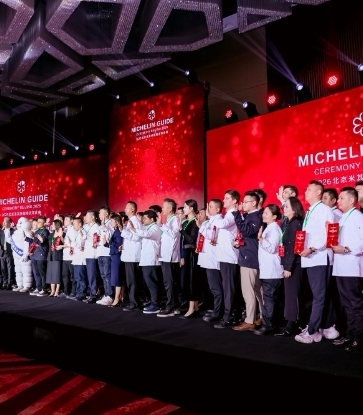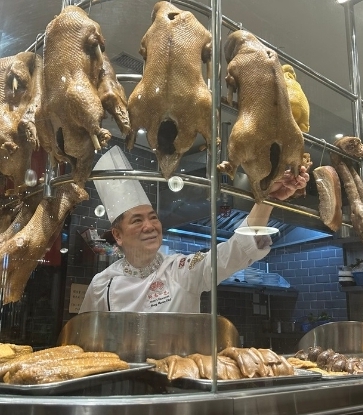Since its opening, The Legacy House, a Cantonese restaurant housed within Rosewood Hong Kong, has faced plenty of challenges brought on by the pandemic and other social and economic changes. To tackle these obstacles, the restaurant’s executive chef, Li Chi-wai, came up with different ways of how The Legacy House can stand out from the crowd amidst these difficult times.
He noticed that Hong Kong-style handcrafted dishes are becoming increasingly rare, despite them embodying unique characteristics of Chinese cuisine that are no doubt worth preserving. He and his team then set out to research traditional recipes, incorporating their own interpretations and techniques to breathe new life into these “old” dishes. These handcrafted recipes that marry traditional elements with modern interpretations have received rave reviews from diners, and many of these have now joined the restaurant’s line-up of signature dishes.

To make these labour-intensive handcrafted dishes, having enough manpower is key. So how does The Legacy House address the issue of staffing? We turned to chef Li, who has been in his profession for over 20 years with extensive culinary management experience, for answers.
“Many Chinese kitchens are divided into three sections: dim sum, barbecued meats, and the main kitchen — and they operate independently of one another. However, at The Legacy House, I expect these three teams to cooperate with each other. For example, the main kitchen team takes care of de-shelling mantis shrimp for the dim sum section’s mantis shrimp dumplings. They aren’t three separate departments — we are one unified production team. This allows us to handle the demand for specialty dishes without the need to significantly increase manpower in the kitchen,” explains Li.
RELATED: The Vanishing Treasures of Cantonese Cuisine and Where to Find Them

Apart from the kitchen’s collaborative model, Li also takes pride in the ingredients used at the restaurant. “We don’t use any pre-made or semi-prepared ingredients at all. All of our dishes are made completely from scratch,” he says. Using the family-style pan-fried stuffed dace as an example, the restaurant first keeps the dace in a tank for several days to remove any muddy odours, then the fish is deboned and ground into a paste. This ensures both the freshness of the ingredients and complete control over the seasoning.
When it comes to The Legacy House’s achievement in obtaining its first MICHELIN Star in this year’s MICHELIN Guide Hong Kong & Macau, Li cannot conceal his delight. “For the past five years, we have been committed to delivering the best quality. Being recognised by the MICHELIN Guide is a great encouragement for us.”
As recommended by Li, here are five must-try handcrafted dishes at The Legacy House that can help you get a deeper look into the restaurant’s culinary philosophy.

Minced Fish Soup, Fungus, Dried Tangerine Peel
Almost every guest who visits The Legacy House orders this dish, with an average of 100 bowls sold per day. Chef Li first pan-fries all the fish including dace, crucian carp, coral trout and yellow croaker, then simmers them in a broth for an hour. This combines the unique flavours of freshwater and saltwater fish to create an exquisitely rich fish soup.Taking this to another level, the chef then adds chunks of mandarin fish—known for its few bones and meaty flesh—alongside fine juliennes of luffa gourd, black fungi, dried tangerine peel and shiitake mushrooms. The fish chunks offer a firm texture and rich depth of flavour. Upon serving, the pot of fish soup is placed over a small stove to keep the broth warm and maintain its flavour and texture.
RELATED: Restore Your Yin and Yang: The Extraordinary Cantonese Soups from Hong Kong MICHELIN restaurants

Work-Fried Lobster, Egg, Conpoy
How is the famous classic dish of Osmanthus Eggs created without the use of shark's fin? Li has opted to use lobster instead, which has an even more prominent umami flavour than shark's fin. The preparation is also a test of skill: oil is added to the wok in two batches to achieve the optimal temperature, then eggs are scrambled until they are light and dry with an osmanthus flower-like appearance. At this point, other ingredients, such as the pre-steamed shredded lobster, bean sprouts, dried scallops, and green onions, are added and stir-fried.The result is a refreshingly light dish that showcases the chef’s wok skills. For an extra thoughtful touch, the dish is served in fried siu mai wrapper, which not only elevates its visual appeal, but also adds a pleasant egg aroma that takes the dish to the next level.
RELATED: What is...Wok Hei?

Deep-fried Duck, Mashed Taro, 24-year Dried Tangerine Peel
Li’s rendition of this renowned Cantonese handcrafted dish is to first cook the duck meat with ginger, green onions, spices, and 24-year-old fermented Dongjia dried tangerine peel until tender. The meat is then shredded and mixed with a thickened duck jus. After it congeals, the mixture is cut into the preferred size then wrapped in mashed taro before being deep-fried until crispy. As you take the first bite, allow the crispy taro to coat your mouth with its aroma, then savour the juiciness of the duck with thickened duck jus. The duck meat is richly flavourful, while the subtle aroma of dried tangerine peel helps alleviate any greasiness for a well-balanced dish. RELATED: Ingredient: Dried Tangerine Peel

Wok-fried Milk, Mantis Shrimp, Crabmeat, Jinhua Ham, Egg White, Black Olive Seed
The key to making wok-fried milk is to use the “soft scrambling” technique, which Li refers to as “cooking without seeing the flame”. Japanese 3.6 milk is blended with egg whites and then wok-fried. The heat must be carefully controlled: too high and the milk will curdle, too low and it will retain too much moisture. Only with the perfect heat can the milk reach a semi-coagulated state with a delicate texture. Mantis shrimp lends an umami note to the dish and enhances the overall mouthfeel. The pièce de resistance is the precious olive seed, which imparts a sweet aroma that further elevates the dish.RELATED: Autumn Crab Feasts: 5 Must-Eat Crab Dishes at MICHELIN Restaurants in Hong Kong

White Sugar Puddings
This classic Cantonese snack looks simple enough, but achieving the perfect result takes plenty of skills. Li spent months perfecting the recipe, but was not fully satisfied with the results. It was not until he discovered old recipes from the 1950s and 60s and studied them closely that he was able to develop the current formula.The preparation process of white sugar pudding is an intricate one: first, a rice batter is made using rice flour, sugar, and yeast, and is left to ferment for one to three days at room temperature to form a starter dough rich in yeast cultures. The chef then takes a portion of this starter dough and combines it with a fresh rice batter, which must be slightly warm to create the ideal environment for fermentation. After fermenting for a day, the batter is finally ready to be steamed.
Throughout the process, the temperature and humidity must be precisely controlled. Seasonal adjustments to the recipe are also necessary to achieve the ideal fluffy, soft, yet springy texture. The end result is a beautifully porous white pudding with a refreshing sweetness balanced by a pleasant, slightly tart aftertaste.
RELATED: Cantonese Pastries & Cakes: MICHELIN-Starred Chinese Chefs’ Sweet Childhood Memories
The article is written by Mandy Li and translated by Iris Wong. Read the original article here.
hero image is Work-Fried Lobster, Egg, Conpoy. All photos courtesy of The Legacy House.





















